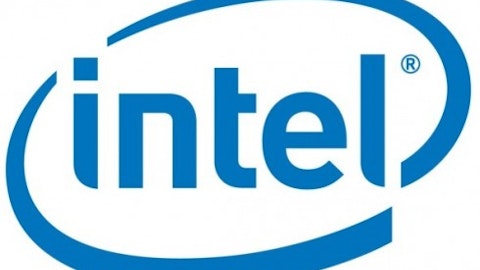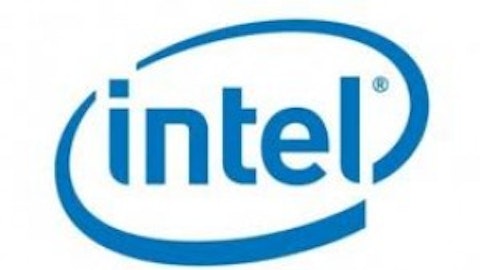Defense industry insiders and investors have closely watched Lockheed Martin Corporation (NYSE:LMT)‘s F-35 fighter program for years now. Optimism around the craft’s stealth and abilities has given way to concerns over its rising costs amid today’s era of cash-strapped budgets. Investors have already worried about what sequestration could do to the F-35’s future, but now we’re finally seeing the effects of the F-35’s expense in a new arena: foreign sales.
According to Reuters, reports have circulated that South Korea’s leaning strongly toward choosing The Boeing Company (NYSE:BA)‘s F-15 Silent Eagle over Lockheed Martin Corporation (NYSE:LMT)’s F-35. The contest to supply the country’s military with a modern superiority fighter has drawn plenty of attention, given the amount of cash at stake: $7.4 billion to the winning bidder, in exchange for 60 jets. Boeing, Lockheed, and EUROPEAN AERONAUTIC (OTCMKTS:EADSF), which has entered its Eurofighter Typhoon in the competition, have looked neck-and-neck in the race — until now.
What would a potential failure in South Korea mean to Lockheed Martin Corporation (NYSE:LMT)’s future?
Costs add up
To be clear, Lockheed Martin Corporation (NYSE:LMT)’s not out of this race just yet. While The Boeing Company (NYSE:BA)’s rumored to have taken the lead, Lockheed has asserted that it will continue to go all-out in its attempts to win the contract. EUROPEAN AERONAUTIC (OTCMKTS:EADSF) isn’t going away, either, even with Boeing’s advantage, as the European competitor looks to sell the South Korean government on the Eurofighter’s cost advantages.
Cost is a huge player here. South Korea’s Defense Acquisition Program Administration, or DAPA, has stuck by the requirement that bids arrive at or under that $7.4 billion mark. Reportedly, Lockheed Martin Corporation (NYSE:LMT)’s F-35 hasn’t cleared that crucial hurdle. If Lockheed can’t find a way to lower the aircraft’s costs, it can kiss this lucrative contract goodbye.
The immediate implications of losing South Korea’s bid aren’t as dramatic as that multi-billion dollar figure might seem. 60 planes is astronomically less than Lockheed Martin Corporation (NYSE:LMT)’s projected 2,443-plane fleet for the Pentagon. Work on that plan has already made its way to Lockheed’s sales, where $175 million in year-over-year F-35 sales growth in the most recent quarter helped offset falling revenue from other aircraft in Lockheed’s largest division
So far, things look good for the plane – even if South Korea shows Lockheed Martin Corporation (NYSE:LMT) the door. But those same costs that have given the Koreans pause could come back to haunt Lockheed in a big way in the future.
Orders under fire
Let’s start abroad. Lockheed Martin Corporation (NYSE:LMT) hopes that international customers will drive a big portion of the F-35’s sales in coming years, particularly as the Pentagon raises production over time. 
Cost concerns have already pushed Turkey to delay its first purchases of the aircraft, although the country has stuck by its plan to purchase 100 of the jets. Australia’s followed the same model; last year it delayed it first purchases of the F-35, despite announcing its commitment to the fighter this May . Italy slashed its own orders of the craft by more than 40 jets earlier in the year, citing savings as a big reason behind the decision. The Netherlands has also considered cutting its orders of the F-35 based on cost concerns.
Delays and cancellations are driving up the cost of each plane even further, which has likely drawn the attention of the cash-conscious governments in Europe and Japan that have signed on to purchase the fighter. While it’s extremely unlikely that any country will actually cancel its investment in the F-35 program, South Korea’s reports confirm that the F-35 isn’t flying as high as it needs to in foreign markets. That won’t help Lockheed Martin Corporation (NYSE:LMT)’s top line as it looks to fight back against sales declines for other aircraft, such as the aging F-16 fighter.
Worse, the Pentagon could still follow Italy and diminish its own F-35 orders. The DoD’s pushed its international partners to stick by their orders of the plane for a good reason: Cancelling orders in the near term will make it even more costly for the Pentagon, already struggling to find ways to trim its own sequestration-ravaged budget, to acquire its next-generation fighter mainstay.
We’ve seen this before. The Pentagon subjected Lockheed Martin Corporation (NYSE:LMT)’s own F-22 Raptor to significant order cuts, paring down its initial request for 650 of the high-tech stealth fighters to a final construction of just 195 aircraft. A similar reduction of the F-35’s orders will take a big bite out of Lockheed’s future sales, just when it needs all the cash it can get to fight back against budget cuts.
The F-35’s a much more versatile craft than the F-22, to be sure, and it fills a crucial need for the Air Force, Navy, and Marines. It’s unlikely the Pentagon or Congress will axe the program entirely, as some have predicted. However, for a Defense Department scrambling to find cash under every couch cushion, ramping up production of the aircraft and fulfilling its lofty acquisition goals may very well prove too costly to complete.
Storm clouds gathering
South Korea’s award is only a minor part of Lockheed Martin Corporation (NYSE:LMT)’s global goals for the F-35, but a loss to The Boeing Company (NYSE:BA)’s older, cheaper F-15 could be a harbinger of cuts and delays from international partners. That’ll be enough to start up a vicious cycle of cost increases on a per-plane basis – increases that could critically threaten the aircraft’s lofty future with the Pentagon.
Lockheed Martin Corporation (NYSE:LMT)’s betting a lot on the F-35, but after South Korea, the skies are looking a lot stormier for this high-profile fighter of the future.
The article What South Korea Means for the F-35’s Future originally appeared on Fool.com.
Fool contributor Dan Carroll has no position in any stocks mentioned. The Motley Fool owns shares of Lockheed Martin (NYSE:LMT).
Copyright © 1995 – 2013 The Motley Fool, LLC. All rights reserved. The Motley Fool has a disclosure policy.



